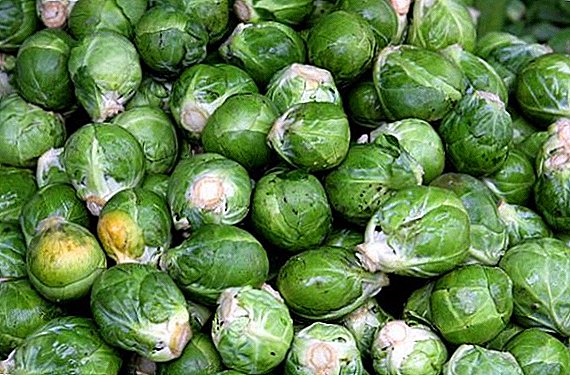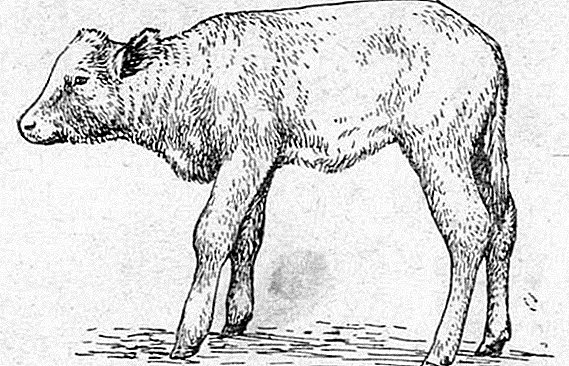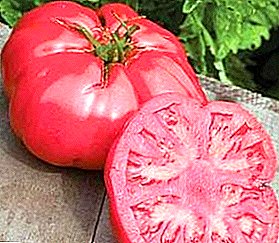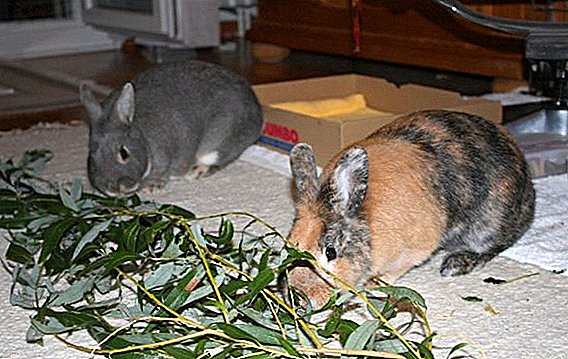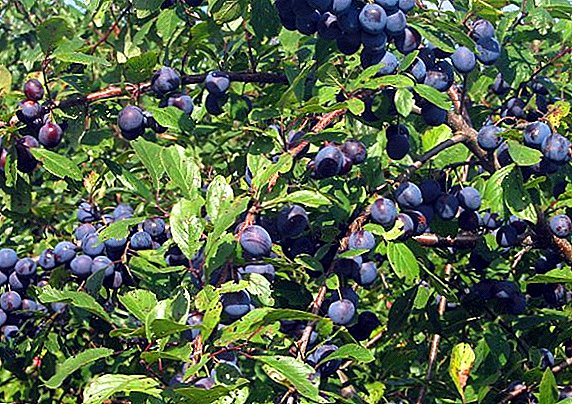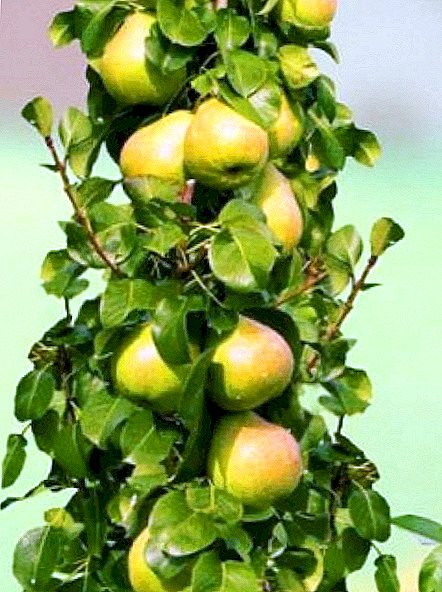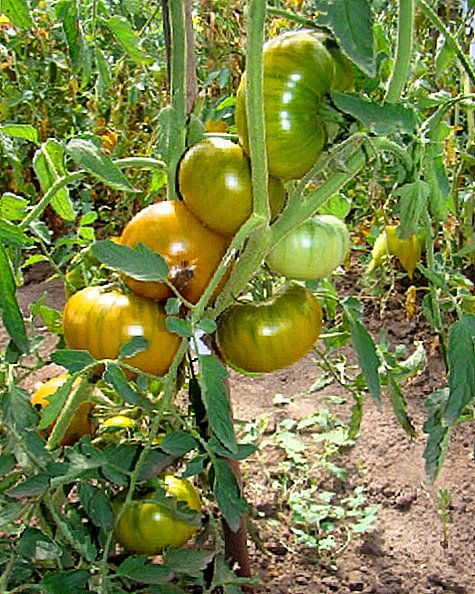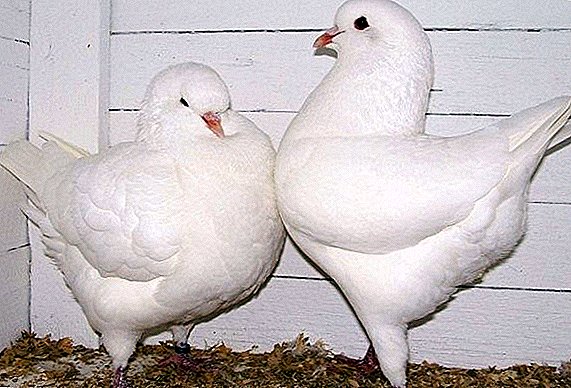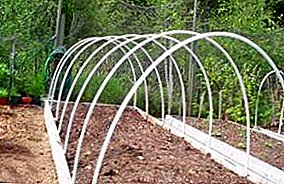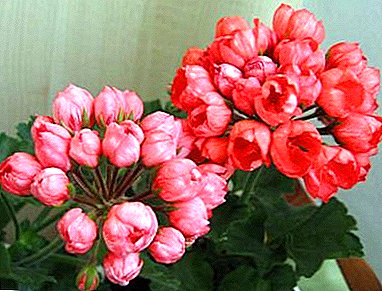
Pelargonium is an amazing ornamental plant that is distinguished by true beauty and elegance. It belongs to the tulip, today more than 20 varieties of pelargonium delight the eye of gardeners. But perhaps the most famous variety is Andrea.
A variety that the world recognized as one of the first, and it is named after a female breeder from the family of Patricia Andrea. Consider all the features in detail and dive into the world of beauty Pelargonium Andrea.
Botanical description and history
Andrea Pelargonium - refers to tulip-shaped plants, is the product of breeding work. It was first bred in 1996, with the United States of America home to the plant. A selectionist from the USA, Andrea, named a flower in honor of himself and his wife.
If we turn to the botanical description, it becomes clear that Andrea Pelargonium is a perennial plant that has branchy stems and simple palmate leaves.
The color of the flowers depends on the variety. Most often they are pale pink or pink with a reddish tint from Andrea. Flowers themselves are collected in multi-flowered umbrella-shaped compounds. The fruit is a box with persistent sepals, drop-down from the bottom to the top.
Varieties and appearance features
Among the varieties of Pelargonium Andrea are the following types:
- Patricia Andrea;
- Carmen Andrea;
- Victoria Andrea;
- Lilian Andrea;
- Linea Andrea.
The difference between these varieties is insignificant, most often they consist in the size of flowers and their color. Appearance in Pelargonium Andrea is distinguished by a special beauty that attracts gardeners from around the world.
The appearance of the flowers is really impressive. The buds themselves are reminiscent of tulips, while they seem to be collected in a single bouquet. The plant looks like a luxurious bouquet. Flowers may have an elongated, oval or elongated shape, depending on the variety.
Foliage has a dazzling emerald green color, and flowers have a different color.: soft pink, coral, red-pink, crimson, pale lilac.
Attention! Most often, the classic Andrei Pelargoniums have rounded buds and reddish petals.
Plant photo
Here you can see photos of pelargonium:





Where and how to plant it?
Pelargonium is a very capricious plant. Therefore, it can not be grown in the "wild" conditions, it simply will not take root there. She is so capricious that caring for her will be a real test for a novice grower. But, if you still decide to grow pelargonium, then remember a few rules:
- The plant loves light. It should be planted in a place where there is always a lot of sun, or there is access to high-quality artificial lighting.
Important! The apartment is better to plant in a place where there is a loggia or balcony, as well as spacious windowsills. The pot with the plant will have to be regularly rearranged on the sunny side.
- Carefully choose the soil for planting. Pelargonium will not grow anywhere. To do this, or visit a specialty store or prepare the soil yourself. To do this, mix in the same proportions: turf, leaf soil, sand, humus and peat. The plant will also benefit from feeding with a high phosphorus content.
Growing from seed
Pelargonium does not tolerate organic matter in the form of supplements, so it is important to take this into account when growing plants. You need to start landing with this algorithm:
- Prepare seeds from March. To do this, take one drop of iodine and a liter of water, moisten the soil with this solution.
- Treat the mixture of turf, sand, humus and peat with a weak solution of potassium permanganate.
- Immerse the seeds in the ground, no deeper than 2.5 centimeters.
- Spray from the spray.
- Cover the container with glass. By the way, it is better to land in spacious boxes or pots.
- The greenhouse should be ventilated occasionally, eliminating condensation.
- When shoots appear, remove the glass.
- When leaves appear, seedlings should be planted in pots.

Care
For the flower you need a constant and rather painstaking care. Although in the indoor plants Pelargonium quickly settles down and is not so often naughty. It is important if you want the plant to please you with abundant flowering, follow a few rules:
- For planting need a small pot. You can estimate the diameter based on the usual size - 12-14 centimeters in width, and a height of 10-15 cm.
- Frequent watering can only harm. Pelargonium calmly refers to dry periods, but oversaturation with moisture can kill the plant.
- Check when the plant needs watering is simple enough - you need to touch the soil near the root. If it is wet, then watering is not needed.
- Humid air - the worst enemy of Pelargonium. It is not recommended to spray the flower.
- Do not forget to care for the branches, so that the bush is neat periodically "pinch" the twigs.
- The plant can not be transplanted if it is not sick, not attacked by parasites and if its root system is not damaged.
Common diseases and pests
There are several diseases that can severely harm Pelargonium. It is important that these diseases are mainly caused by improper care or pests.
Attention! Pelargonium is very fond of pests, so it is necessary to regularly engage in preventive measures, as well as follow the plant feeding. Although the spread of pests can be affected by strong moisture or weakened "immunity" of the plant.
Pelargonium is most often attacked by parasites, such as:
- Whitefly.
- Aphid.
 If the plant is attacked by the whitefly, then it must be treated with a fitoderm, transplanted into a clean pot with new soil, watered moderately and not put the first days in bright light. If aphids have been attacked, then treatment with Agravertin and then phytosporin is necessary. Eliminate the effects of cold drafts, low air temperature.
If the plant is attacked by the whitefly, then it must be treated with a fitoderm, transplanted into a clean pot with new soil, watered moderately and not put the first days in bright light. If aphids have been attacked, then treatment with Agravertin and then phytosporin is necessary. Eliminate the effects of cold drafts, low air temperature.
Among the diseases, root neck rot is considered to be the most common, which then goes to root rot. If the soil is too wet, the disease progresses, affects the entire root system and cannot be saved. Also a common disease is gray mold, it is also a consequence of high soil moisture. For treatment, you need to dry the soil at the root and put the plant into the light.
Breeding features
Pelargonium multiplies in two ways: seeds and cuttings. About planting seeds, we have already written above in the article. But as for the cuttings, you need to know about the following:
- The length of the handle must be at least five centimeters and not more than seven.
- Before planting the stalk should be left outdoors for 24 hours.
- It is planted only in loose moist soil, which periodically needs to be watered.
- Cuttings should be outdoors, do not cover them with a film or hide in a dark place.
- When the stem rooted, it must be put in a pot.
Andrea Pelargonium - a plant that, despite its capriciousness, pleases the grower eye. It has a rich palette of colors and reminds everyone of their favorite tulips. Care for the plant should be carefully, then it will please the eye all year round.


